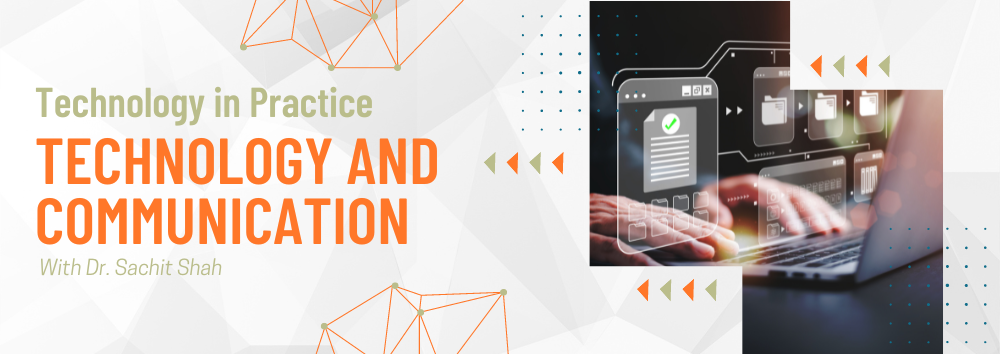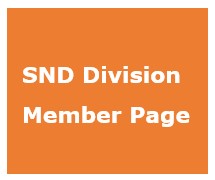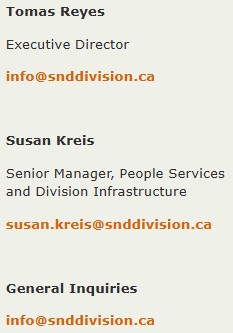Dr. Sachit Shah on Technology and Communication
*The opinions expressed in this article belong to the Physician and do not represent the opinions or endorsement of the Division.
For some, the word “technology” elicits excitement at new possibilities. For others, it inspires uncertainty, caution or even worry about the time and effort it will require to learn.
For many Family Physicians in Surrey-North Delta, technology offers a way to streamline their practice, achieve better work-life balance and offer more comprehensive care to their patients.
In this series, we explore different technologies that our Family Physician members are using to support the work that they do – from digital fax services to EMR plug-ins and beyond.
First in the series is Dr. Sachit Shah. Dr. Shah is a member of the SND Board of Directors. He is also the owner and Medical Director of Amari Medical, a large Family Practice in North Surrey, where he implements a number of technologies to improve communication with patients and specialists alike.
What are some technologies that you use in your practice that have made the most impact?
At my clinic, we’re all on CareConnect, which makes a huge difference. Let's say a patient comes into my office and they've just been to the emergency department or they've just seen a specialist in the hospital – I can go into CareConnect and see what exactly happened. It reduces the number of phone calls enormously.
Another system we use that has been helpful for communicating with other clinics has been RingCentral, which is a cloud-based fax service that is directly connected to our EMR. I’ve found it’s a lot cheaper and more effective than SRFax, which is what many clinics use, and I often recommend that physicians switch over.
In terms of communicating with patients, we have an online booking system that is also connected to our EMR, which allows us to communicate easily with patients via email, so we're not spending extra time chasing each other.
Another helpful tool that we use is called Weave. Each doctor at our clinic has Weave downloaded on their phone, which enables us to make phone calls or send text messages to patients from anywhere. These messages are secure and the number the patient sees is our main clinic phone number.
With these tools, we can now give patients a single office number and they can call, text or email us – whatever they prefer. This has made a huge difference in our call volume, especially in the mornings. Now, the only calls we receive in the morning are from those elderly patients who aren’t comfortable texting or emailing.
How do you see this kinds of technologies making a difference for patients?
Most of our younger, more technologically aware patients don't actually phone us – they prefer to make their appointments through technology because it’s more convenient for them.
With the tools we now have at our clinic, we’re also able to follow up with patients not only about abnormal test results, but about normal ones as well. I can quickly email a copy of the results to the patient and let them know everything is fine. This way, the patient is reassured, and they’re happy that their doctor has acknowledged the result.
We used to get a huge number of women who would phone to ask if their PAP result was clear, and now we can easily send them a copy of their results and let them know they don’t have to come in for another 36 months.
Another benefit of these communication tools for our patients is that nobody falls through the cracks – if I need to call somebody in for an annual blood test or a colonoscopy or PAP, that is all automatically taken care of at the appropriate time.
How can adapting new technologies make life easier for Family Physicians?
These kinds of technologies make life easier by helping things run a more smoothly and efficiently.
On Weave, I have a list of all my patients, including their email address and phone number, so if I am out of office and I need to send an email, or call or text a patient, I can. This allows me to catch up on things when I have a spare moment, so I’m never really behind.
It also makes our MOAs’ lives a lot easier. Every conversation I have with a patient using these tools is automatically documented in their medical record – the information no longer has to be entered manually.
Why do you think it’s important for Family Physicians to proactively adapt new technologies in their practice?
Used correctly, technology can save a Family Physician time and money while contributing to effective patient care. With RingCentral, Family Physicians are saving money. With CareConnect and PharmaNet, they're getting access to the latest information about the patient without having to make multiple phone calls or ask their staff to make multiple phone calls.
Because of these technologies, I have been able to increase the number of patients I have on my books -- even though I don't work full-time -- because I’ve reduced the number of visits per patient.
For example, I've got a patient who is undergoing treatment for bowel cancer and he likes to have access to his oncology reports. So, every time I get a report, I email it to him through a plug-in in my EMR. With the press of a button, he's got the report and it’s documented to the chart.
The number of visits he needs has been reduced because he has all the information there.
If a Family Physician is open to adapting some new technology into their practice, where should they start?
They should have access to CareConnect and PharmaNet. They can start there. For an EMR, I wouldn’t go through anything that’s proprietary. I would recommend something cheap and cheerful like OSCAR or Juno. And I would look at adding a digital booking system. What will work best will depend on the size of the clinic, and the needs of its Family Physicians, patients and MOAs.




